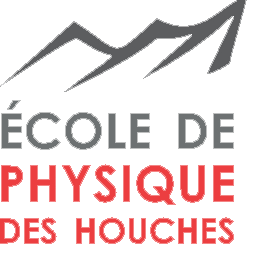Speaker
Description
Quantum electrodynamics (QED) is one of the best tested theories in physics [1]. However, energy levels in atomic hydrogen have been determined with much higher accuracy than what QED theory can provide, because it is hampered by the uncertainty in the experimentally determined proton charge radius. Therefore, spectroscopic measurements on muonic hydrogen ($\mu$H) were performed which improved the accuracy of the proton charge radius by a factor of 10, but showed a 5-7 $\sigma$ discrepancy with the CODATA-2010 value [2]. This problem is now known as the proton radius puzzle. Recently the proton radius obtained from 2S-4P spectroscopy [3] in electronic hydrogen confirmed the muonic value and this confusing state of matters requires further tests.
We pursue two possibilities to help unravel the puzzle. One is precision spectroscopy of molecular hydrogen on the two-photon X-EF band to extract a proton radius and to test molecular quantum theory. The other is based on 1S-2S spectroscopy in electronic helium ions, to be compared with spectroscopy on the 2S-2P transition in muonic helium ions performed by the CREMA collaboration. This will provide new information on the proton radius puzzle by a comparison of the alpha particle charge radius [2], and could potentially also lead to a better bound-state QED test. In both experiments we need short wavelengths that require high power laser pulses for nonlinear upconversion.
We developed a method that combines high power with high precision, called Ramsey-comb (RC) spectroscopy [4], based on excitation with different pairs of amplified and upconverted frequency comb laser pulses. With this method we measured the two-photon EF-X transition (v=0, J=1) at an accuracy of 10$^{-11}$ [5], using counter-propagating 202 nm pulses to suppress the Doppler effect. The accuracy is nearly 2 orders of magnitude better than previous measurements, and further improvements are envisioned to be able to extract a proton radius. This result also shows that the RC method is very promising for the 1S-2S He$^+$ experiment. There we will combine a 790 nm photon with its 25th-harmonic to perform two-photon RC spectroscopy with unequal photons to significantly increase the transition probability. He$^+$ will be trapped in a linear Paul trap and sympathetically cooled with Be$^+$. We are now testing the combination of the RC technique with high harmonic generation, by exciting xenon with a pair of upconverted pulses at ~113 nm. The current status of all three experiments will be presented.
[1] A. Matveev et al., Phys. Rev. Lett. 110, 230801 (2013).
[2] R. Pohl et al. (The Crema Collaboration), Science 353, 6300 (2016).
[3] A. Beyer et al., Science 358, 6359, 79-85 (2017).
[4] J. Morgenweg et al., Nature Physics 10, 30-33 (2014).
[5] R. K. Altmann et al., submitted.
